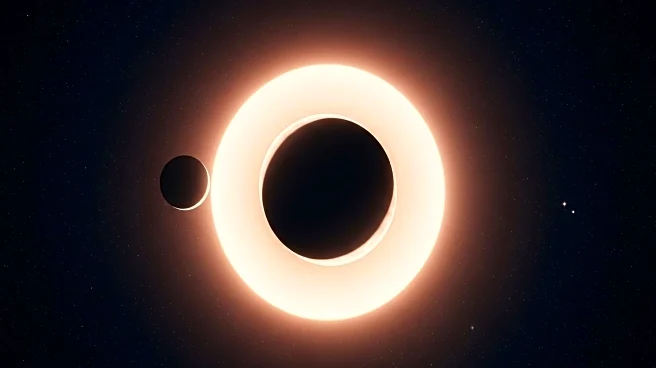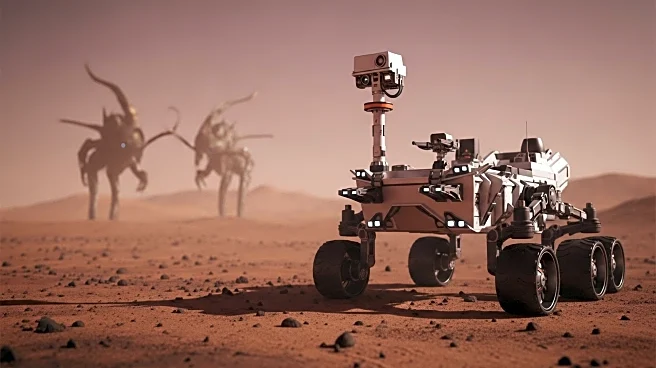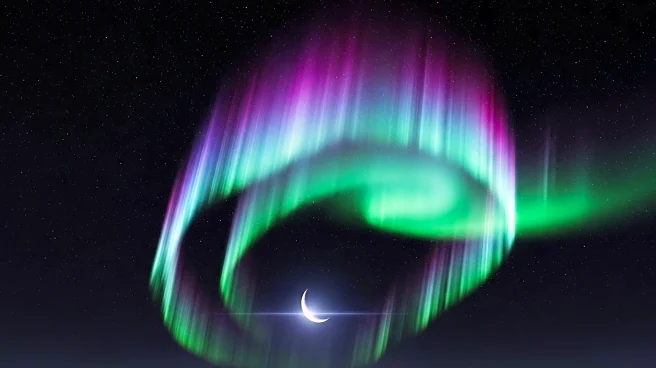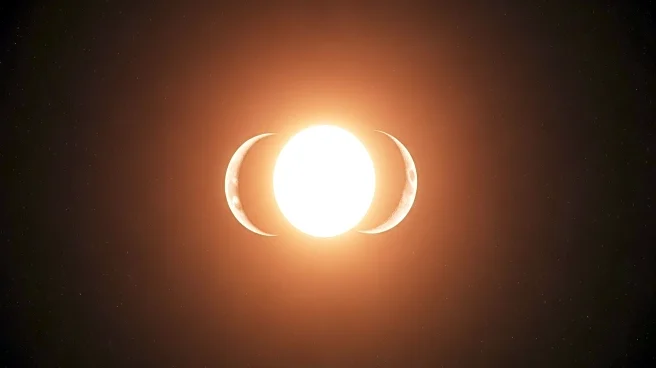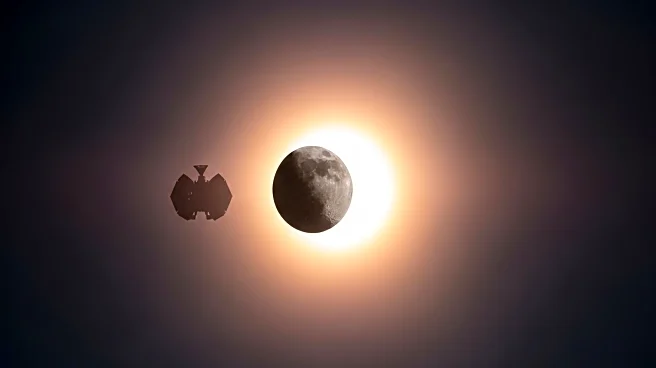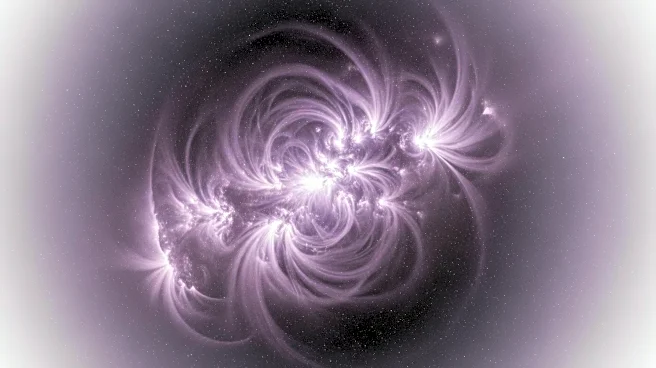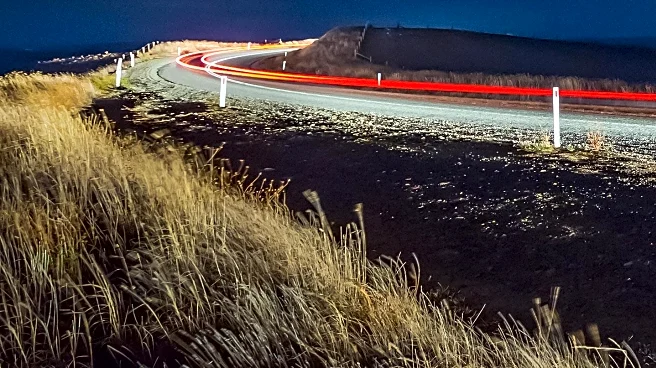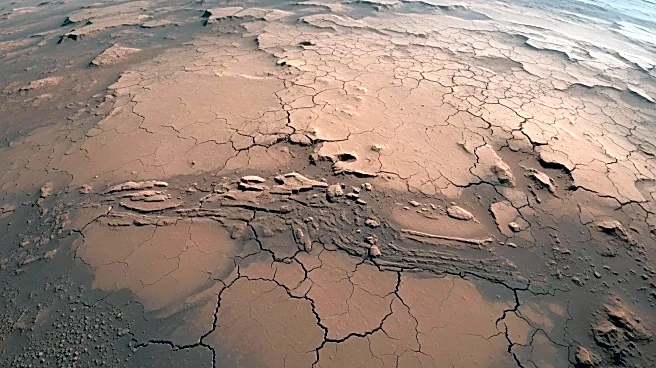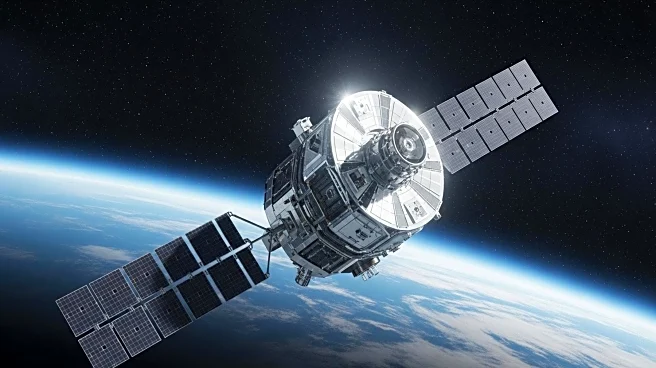What is the story about?
What's Happening?
A satellite operated by the National Oceanic and Atmospheric Administration (NOAA) captured an unexpected image of the moon passing in front of the sun. This rare event was recorded by the CCOR-1 coronagraph aboard the GOES-19 satellite, which is positioned in geostationary orbit above the equator. The image shows the moon appearing fully illuminated due to Earthshine, despite not being in a full phase. The CCOR-1 is designed to observe the solar corona and monitor space weather events.
Why It's Important?
The accidental capture of the moon crossing the sun highlights the capabilities of modern satellite technology in observing celestial events. Such imagery can enhance public interest in space exploration and contribute to scientific understanding of solar phenomena. The CCOR-1's ability to monitor coronal mass ejections and space weather is crucial for predicting disruptions to satellite systems and power grids on Earth, underscoring the importance of advanced space observation tools.
What's Next?
The GOES-19 mission, launched in 2024, aims to replace older coronagraphs and improve space weather forecasting. More satellites with similar capabilities are planned, ensuring continued monitoring of solar conditions. The accidental imagery may inspire further technological advancements and public engagement with space science.
Beyond the Headlines
The event underscores the interconnectedness of celestial bodies and the impact of space weather on Earth. It also reflects the growing trend of satellites capturing unplanned yet visually striking moments, contributing to the narrative of space exploration as both a scientific and aesthetic pursuit.
AI Generated Content
Do you find this article useful?
